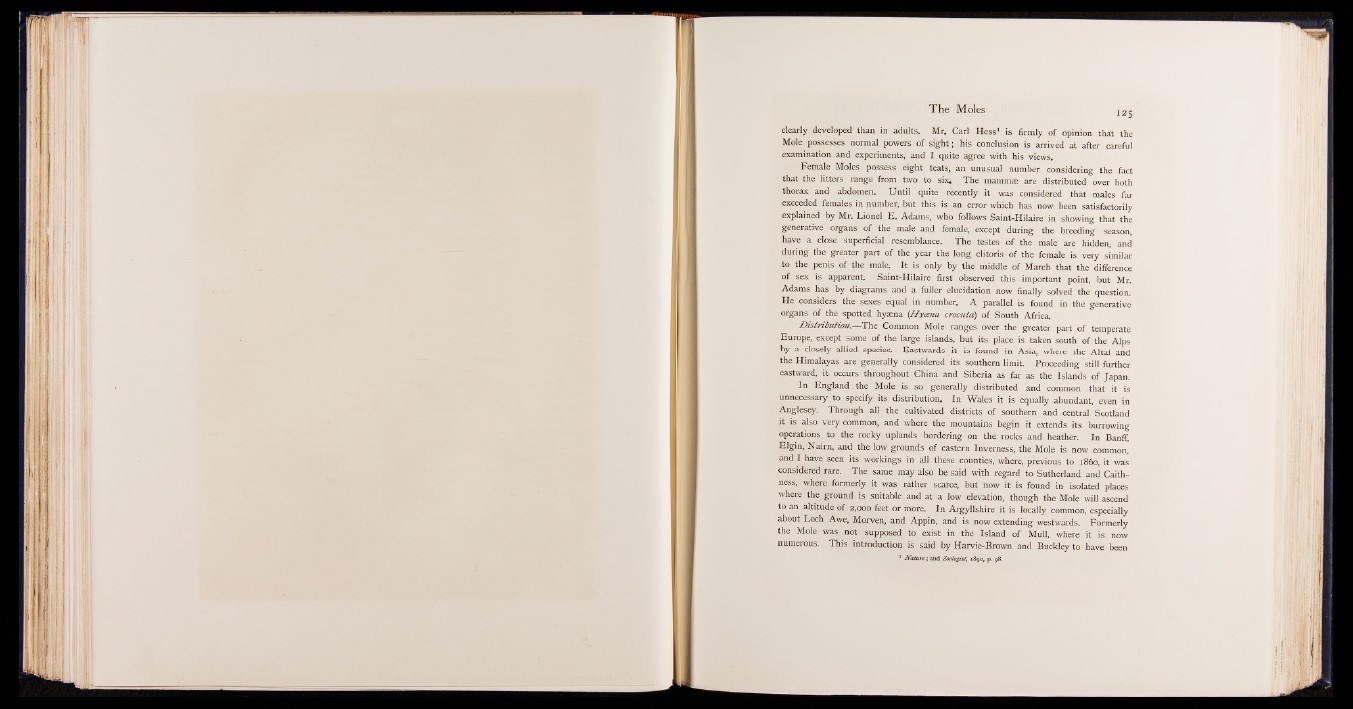
The Moles
clearly developed than in adults. Mr. Carl Hess* is firmly of opinion that the
Mole. jttSsesses normal powers | | s ig h t ; his conclusion is arrived at after careful
examination and experiments, and I . quite agree with his views.
Female Moles possess eight teats, an unusual number considering the fact
that the litters range from two to six. The mammae are distributed over both
thorax and abdomen. Until quite rkently it was considered that males far
exceeded females in number, but this is an error which has now ..been satisfactorily
explained by Mr. Lionel E, Adams, who follows Saint-Hilaire in showing that the
generative organs of the male and female, except during the breeding season,
have a close superficial resemblance. The testes of the .male are hidden, and
during the greater, part of the year the long clitoris of the female & very similar
to the penis of the male. It is only by the middle of March that the difference
of sex is apparent. Saint-Hilaire first observed thiJfimportant point, but Mr.
Adams has by diagrams and a fuller elucidation now finally solved the question.
He considers the sexes equal in number. A parallel is found in the generative
organs of the spotted hyrena ('Hycena crocuta) of South Africa.
Distribution.— The Common Mole? ranges over the greater part of temperate
Europe, except some of the large islands, but its place is taken south of the Alps
by a closely allied speciefe. Eastwards it is found in Asia, where the .Altai and
the Himalayas are generally considered its southern limit. Proceeding still further
eastward, it occurs throughout China and Siberia as far as the Islands of Japan.
In England the Mole is so. generally distributed and common .that it is
unnecessary to. specify its distribution. In Wales it is equally abundant- even in
Anglesey. Through all the cultivated districts of southern and central Scotland
it ‘ is also very common, and where the mountains begin it extends its burrowing
operations to the rocky uplands bordering on the rocks and heather. In Banff,
Elgin, Nairn, and the low grounds of eastern Inverness, the Molelji now common!
and I have seen its workings in all these counties, where, previous to i860, it was
considered rare. The same may|dso>be said with regard: to Sutherland and Caithness,
where formerly it was rather scarce, but now it is found in isolated places
where the ground is suitable and at a elevation, though the Mole will ascend
to an altitude of 2,000 feet or more. In Argyllshire it is locally common, especially
about Loch Awe, Morven, and Appin, and is now extending westwards. Formerly
the Mole was not supposed to exist in the Island of Mull, where it iss now
numerous. This introduction is said by Harvie-Brown and Buckley to have been
1 Nature; and Zoologist, 1890, p. 98.